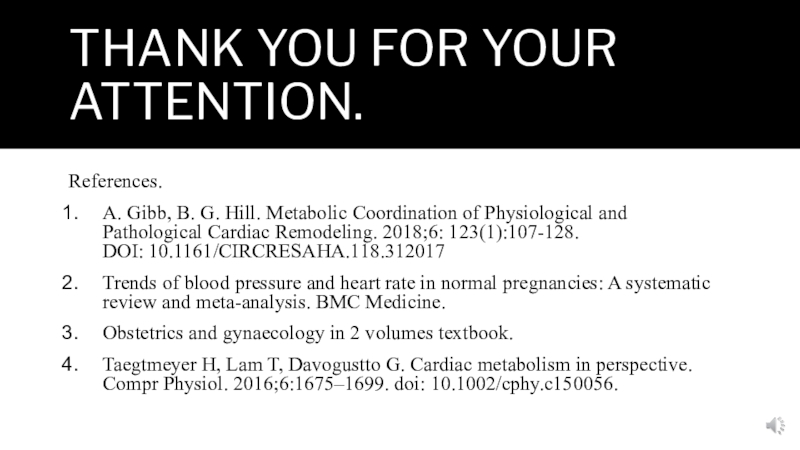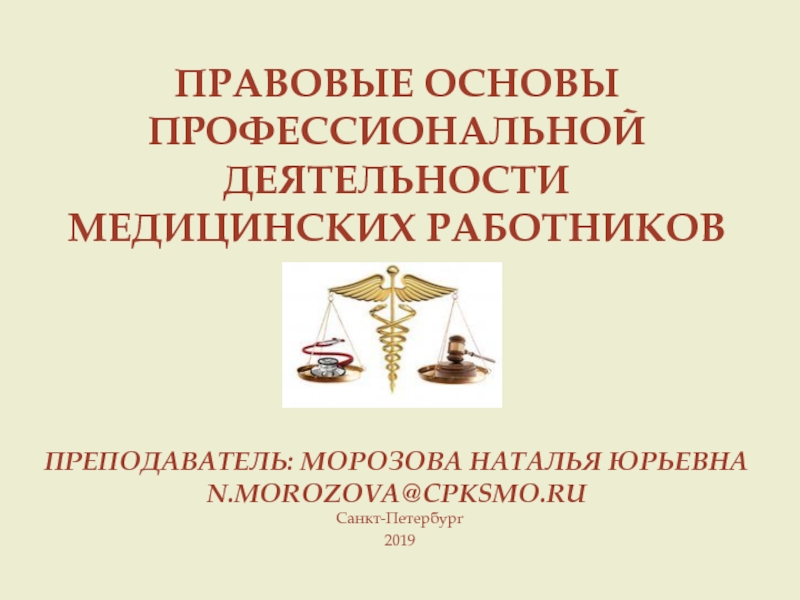Разделы презентаций
- Разное
- Английский язык
- Астрономия
- Алгебра
- Биология
- География
- Геометрия
- Детские презентации
- Информатика
- История
- Литература
- Математика
- Медицина
- Менеджмент
- Музыка
- МХК
- Немецкий язык
- ОБЖ
- Обществознание
- Окружающий мир
- Педагогика
- Русский язык
- Технология
- Физика
- Философия
- Химия
- Шаблоны, картинки для презентаций
- Экология
- Экономика
- Юриспруденция
CVS changes in Female organism in pregnancy
Содержание
- 1. CVS changes in Female organism in pregnancy
- 2. Types of changesAnatomical Changes Physiological changes Change
- 3. Indication and consequences of the mentioned change.
- 4. More changes. 5. Increase in Circulating BV:-The
- 5. 7. Decrease peripheral resistance: The decrease of
- 6. 2. BMC Medicine.
- 7. Hematological changesThe total number of leucocytes is
- 8. Thank you for your attention. References. A.
- 9. Скачать презентанцию
Слайды и текст этой презентации
Слайд 2Types of changes
Anatomical Changes
Physiological changes
Change in heart shape
and position
Apex beat shift
Additional heart sounds
Edema
Tachycardia
Increased
circulating blood volumeDecrease peripheral resistance
Edema
Hematological changes
Слайд 3Indication and consequences of the mentioned change.
Change in heart
shape and position:-
The heart moves upwards and to the left
usually. This occurs due to increase in uterus size pushing on the diaphragm. The heart also grows in size to increase the CO to pump more blood to the fetus and mothers vital organs. Consequently this leads to :
2. Apex beat shift: It shifts to 4th ICS, left of MCL.
3. Additional heart sounds: There is accentuation of 1st heart sound, there maybe systolic murmers, and 3rd heart sound.
4. Tachycardia: To increase the CO.
1. A. Gibbs, B. G. Hills.
Слайд 4More changes.
5. Increase in Circulating BV:-
The volume of blood
plasma in pregnancy begins to increase from the 10th week
of pregnancy. The intensive increase of volume of circulating blood plasma proceeds to 34th week of pregnancy, after that the increase proceeds, but considerably slower. The amount of red blood cells (RBC) is also multiplied, but to a lesser degree[3].As a result, oligocythemic anemia and decrease of blood viscosity occur. Therefore, the relative decrease of hemoglobin volume, called “hydremia of pregnancy”, or physiological hypervolemia (autohemodilution), usually takes place almost in every pregnant woman.
Слайд 57. Decrease peripheral resistance: The decrease of common and peripheral
resistance of vessels is explained by formation of utero-placental circle
of blood circulation. Moreover, vasodilatory action of progesterone and estrogen may affect it.8. Edema: The central venous pressure is raised on average .The pressure in the veins of upper extremities does not change. The pressure in veins of lower extremities increases. Partially it is due to force of gravity, partially — due to obstacle to backflow of blood from uterus and placenta.
The gravid uterus produces a compression effect on the inferior vena cava, when the patient is in supine position. Worsening of vein outflow through the lumbar and paravertebral veins, and reduction of minute cardiac volume cause a collapse in some women. Therefore, the position on the back is not recommended for pregnants.
Слайд 7Hematological changes
The total number of leucocytes is multiplied from 7,500
to 10,000 per mm3[4].
ESR (erythrocytes sedimentation rate) amounts to
50 mm. The quantity of thrombocytes is approximately doubled running by the term up to 316,000 per mm3. This increases chances of DVT in pregnant women.
In the II and III trimester of pregnancy the content of coagulate factors in blood increases, the prothrombin index rises. The rate of blood coagulation gradually increases; the structural properties of blood clot are enhanced.
Слайд 8Thank you for your attention.
References.
A. Gibb, B. G.
Hill. Metabolic Coordination of Physiological and Pathological Cardiac Remodeling. 2018;6:
123(1):107-128. DOI: 10.1161/CIRCRESAHA.118.312017Trends of blood pressure and heart rate in normal pregnancies: A systematic review and meta-analysis. BMC Medicine.
Obstetrics and gynaecology in 2 volumes textbook.
Taegtmeyer H, Lam T, Davogustto G. Cardiac metabolism in perspective. Compr Physiol. 2016;6:1675–1699. doi: 10.1002/cphy.c150056.
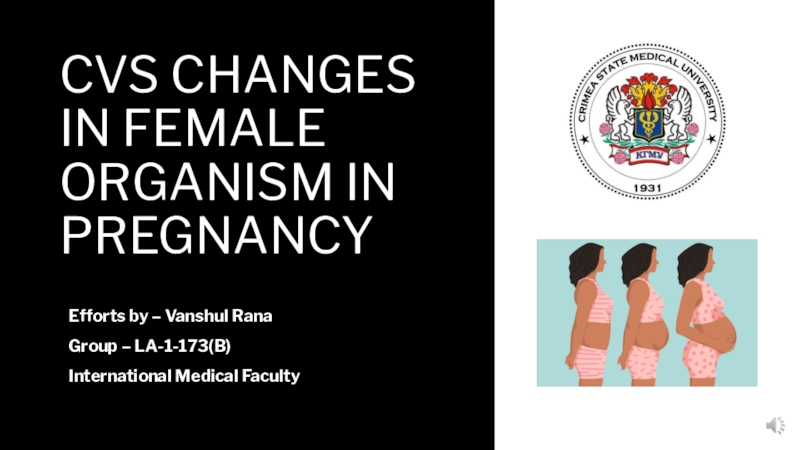
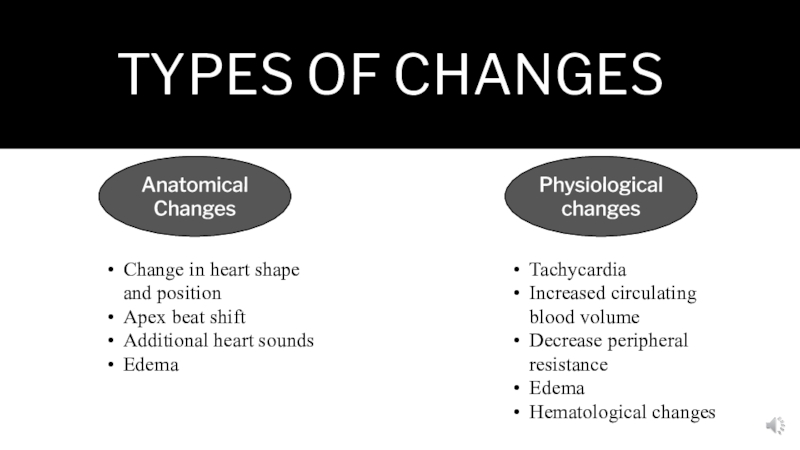
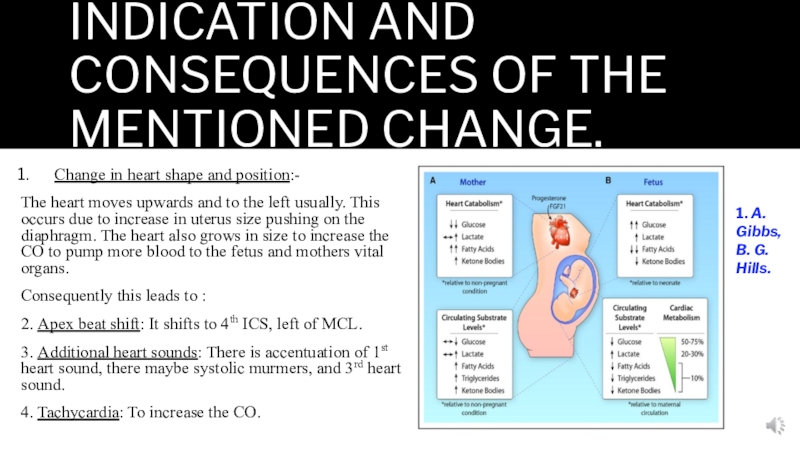
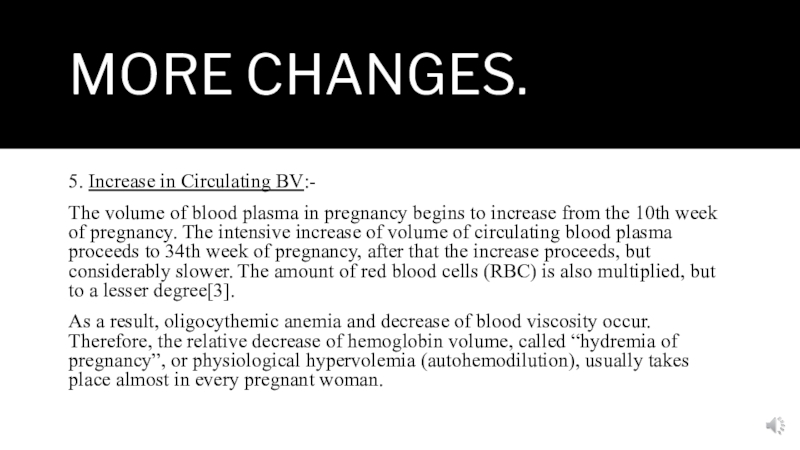
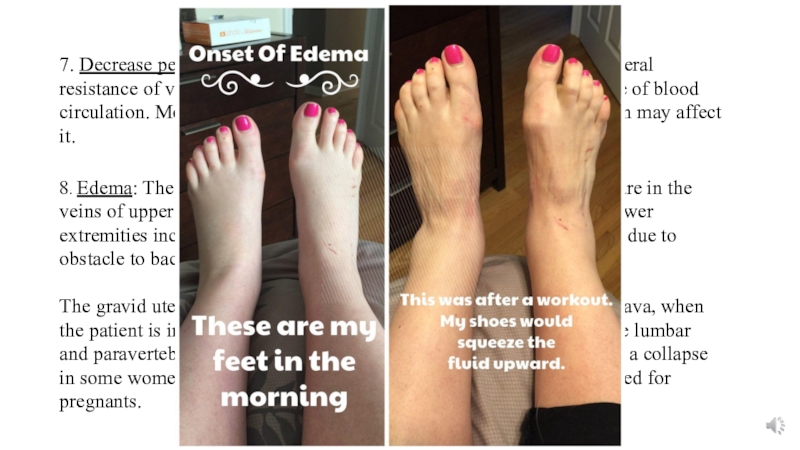
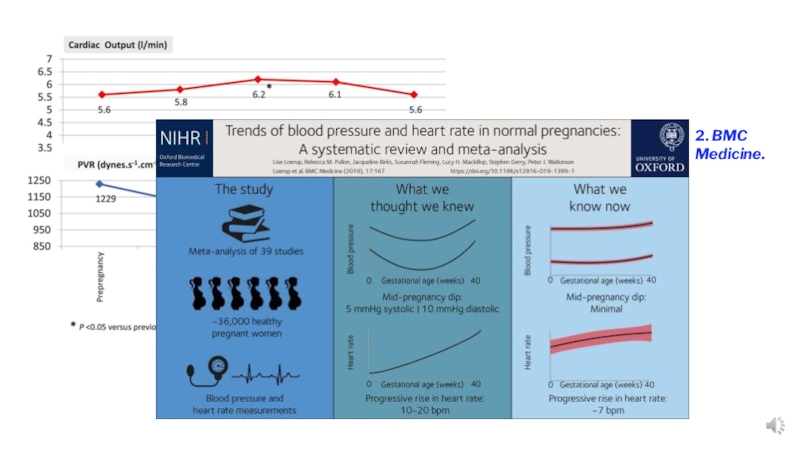
![CVS changes in Female organism in pregnancy Hematological changesThe total number of leucocytes is multiplied from 7,500 to Hematological changesThe total number of leucocytes is multiplied from 7,500 to 10,000 per mm3[4]. ESR (erythrocytes sedimentation](/img/tmb/6/574560/607e28e76be31ae3e26b49cd0e981aaf-800x.jpg)
